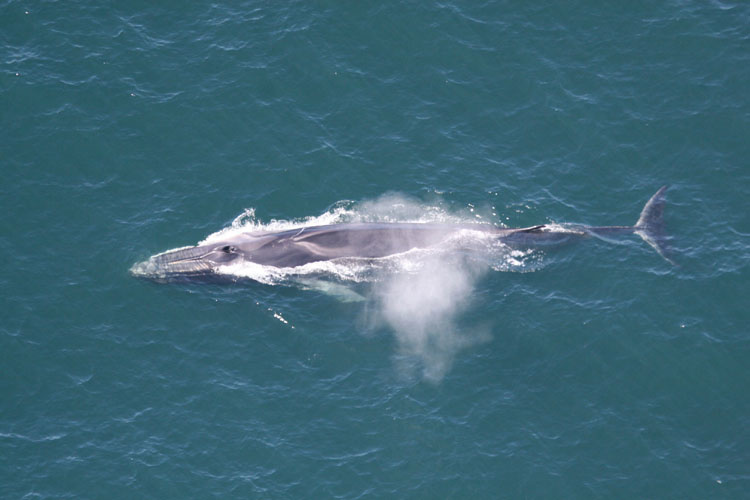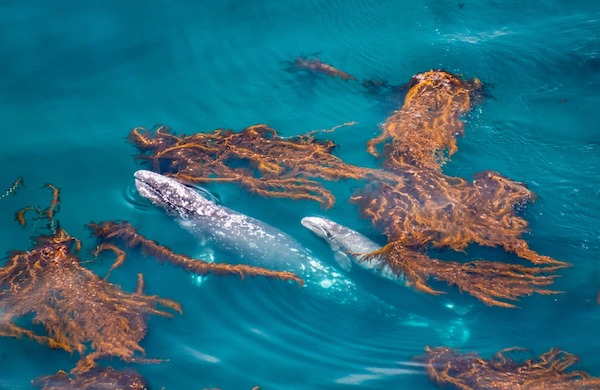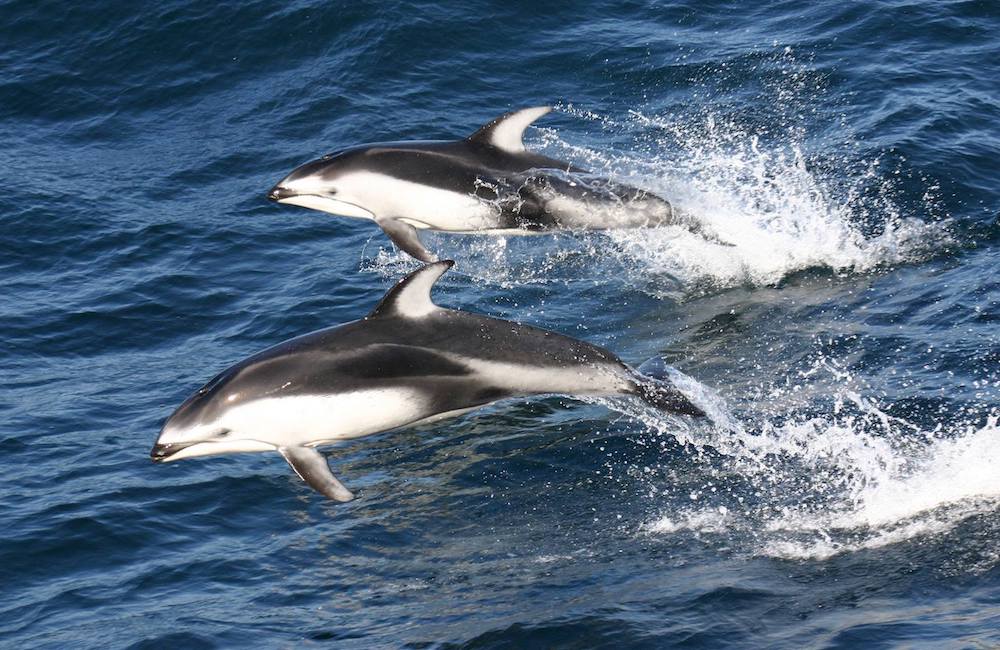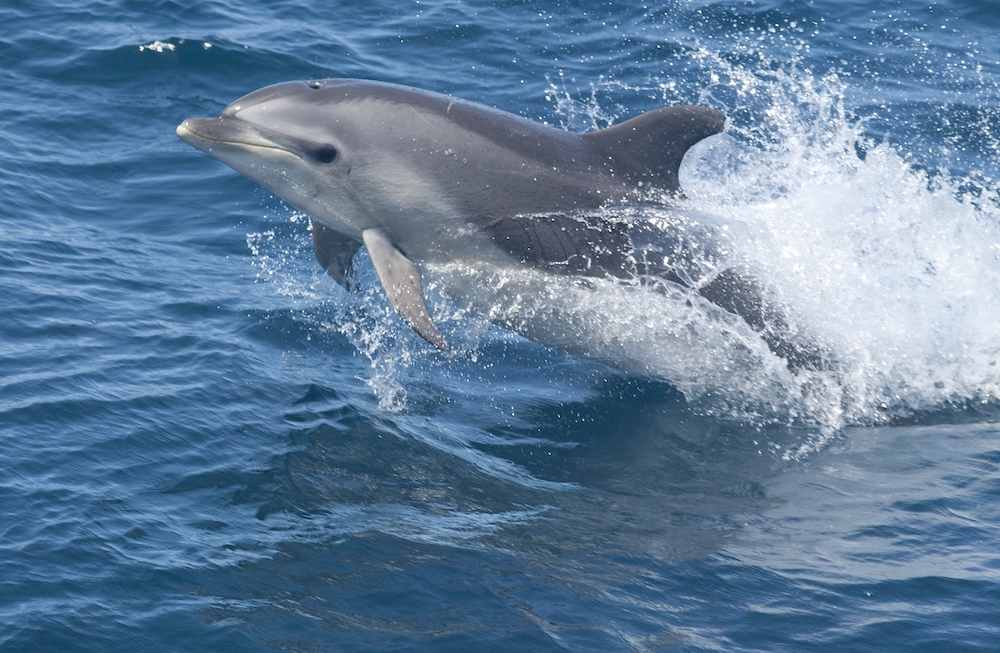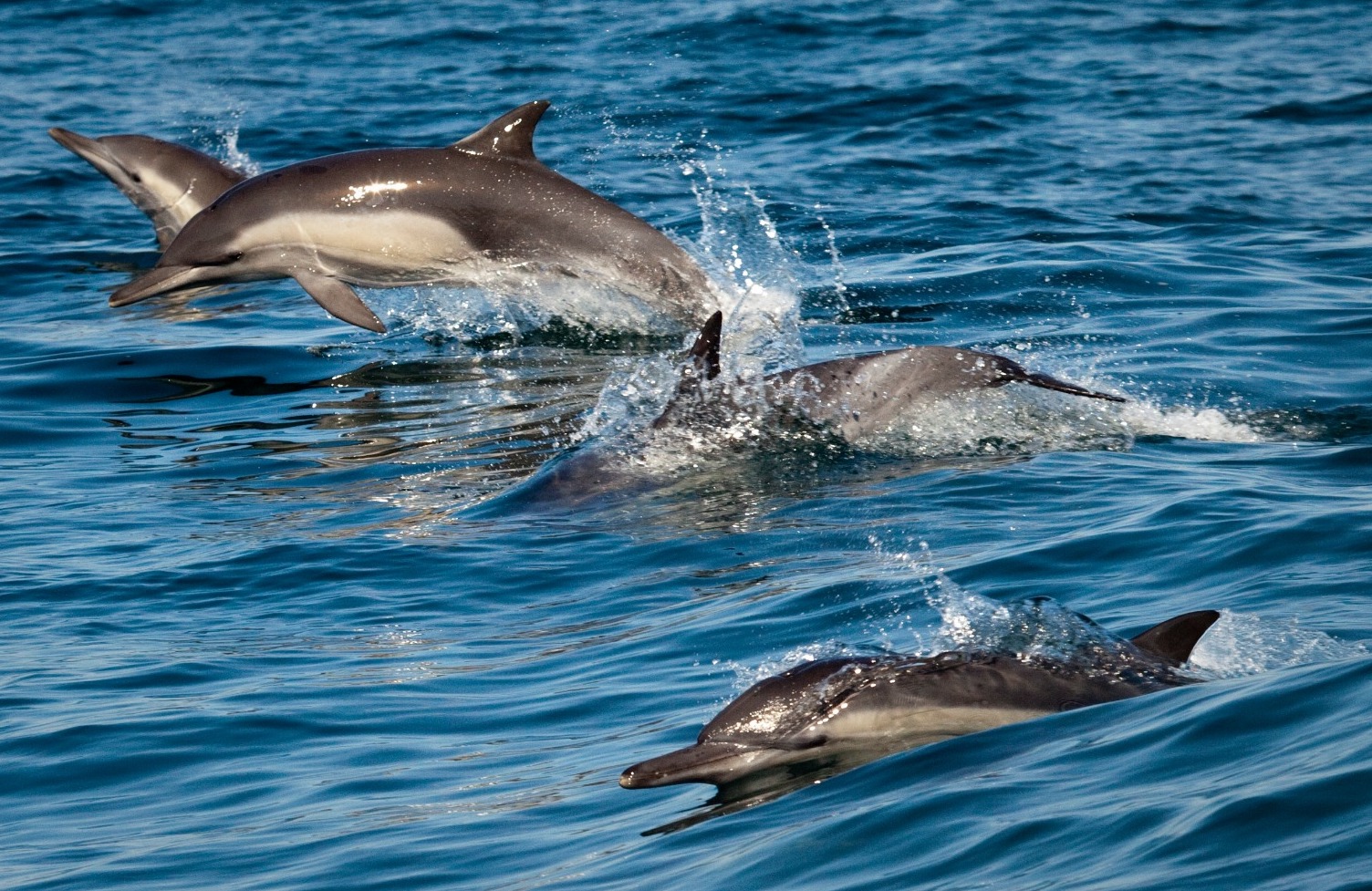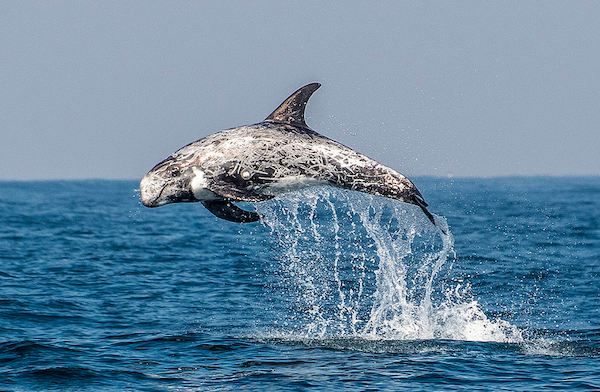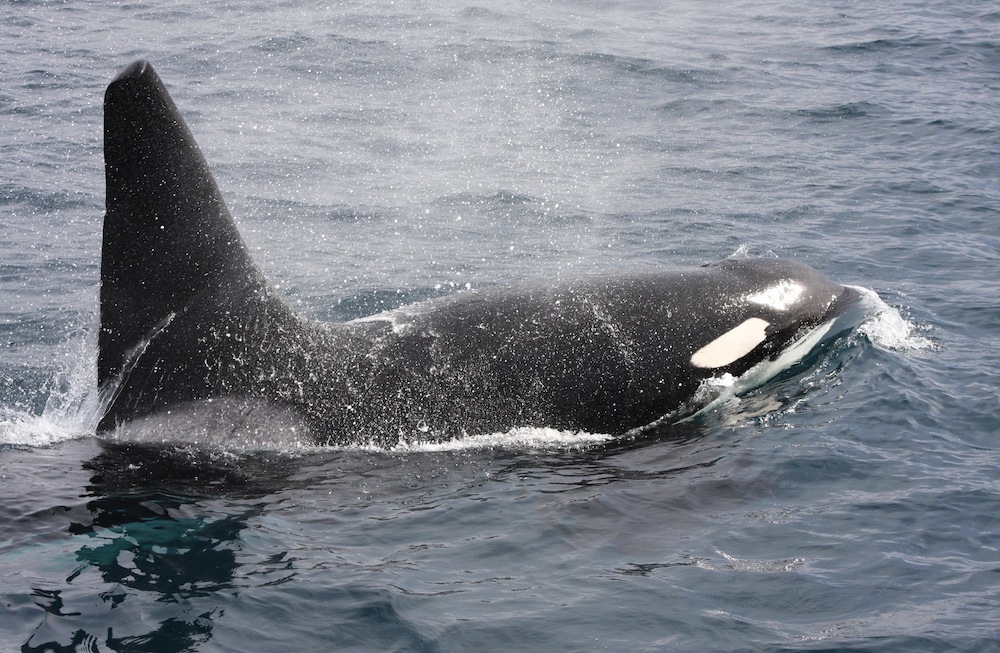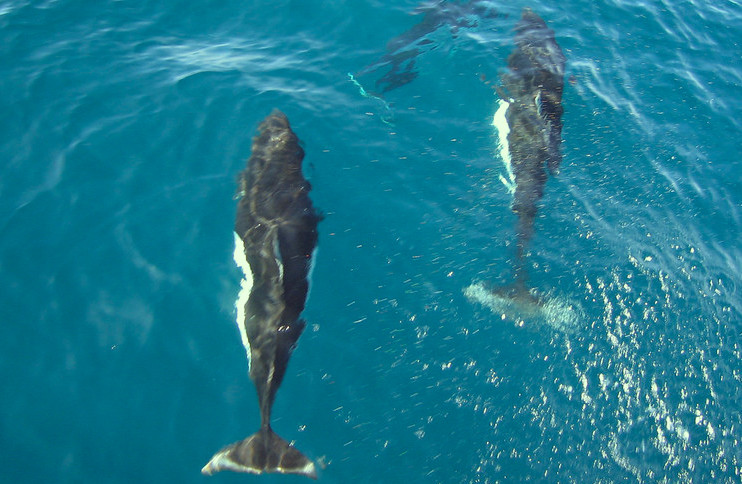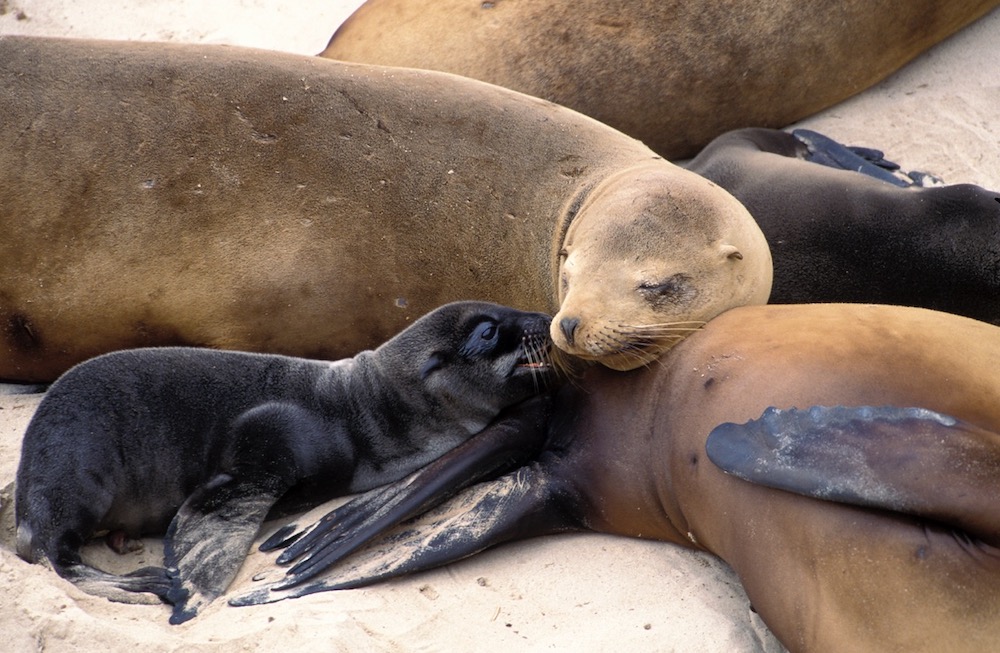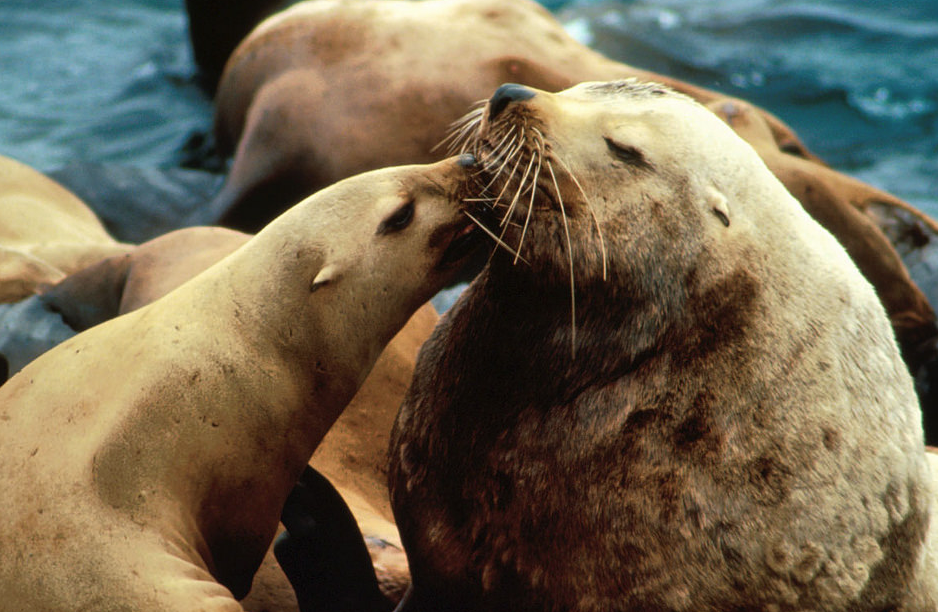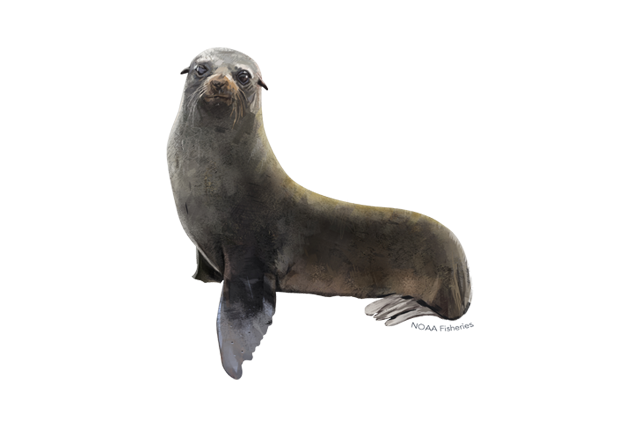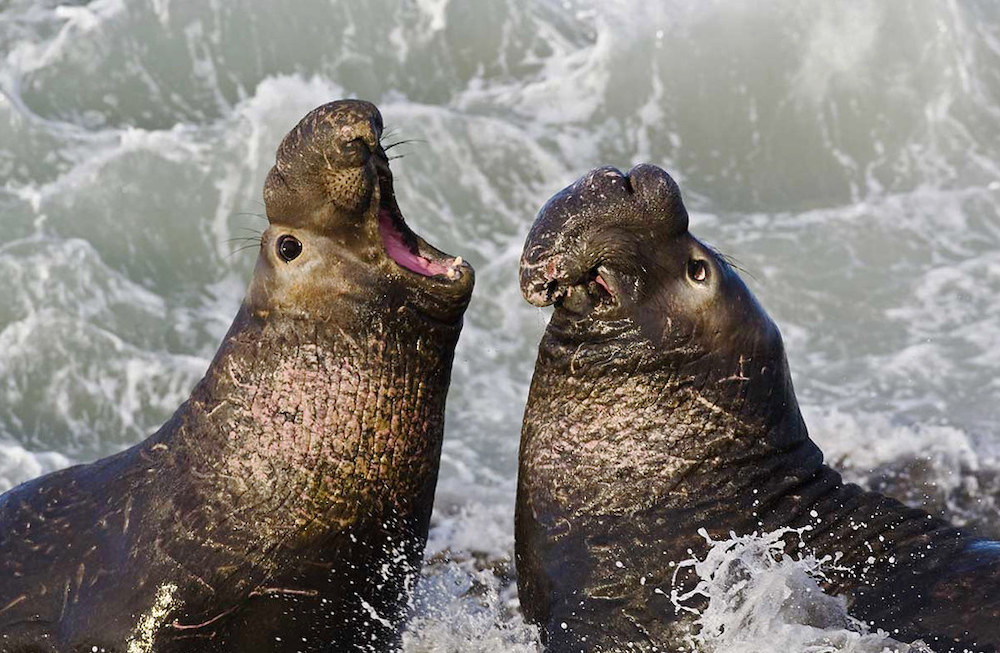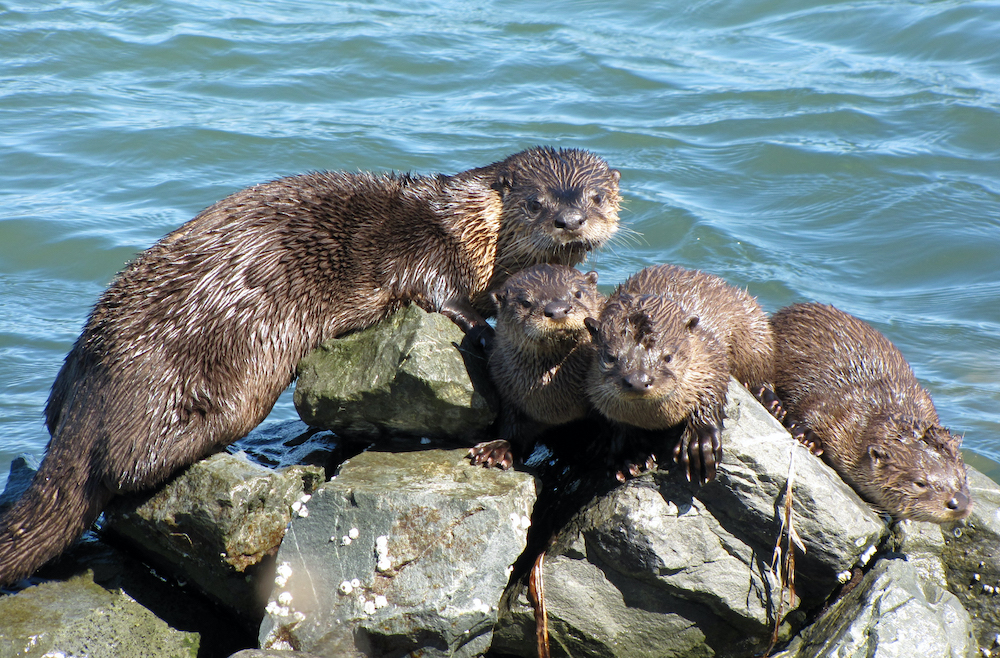
Blue Whale (Balaenoptera musculus)
Blue whales can be seen swimming and feeding off the California coast from mid-June through October when krill is abundant. Blue whales are endangered globally and the Sanctuary is considered an extremely important habitat for these whales as critical feeding grounds.
Habitat: Open ocean
Range: Global
Avg. Size: ~70-90 ft; recorded up to 100ft.
Diet: Krill (up to 2-4 tons per day)
Fun Fact: Blue whales are the largest animal to ever live!
Photo: NOAA


